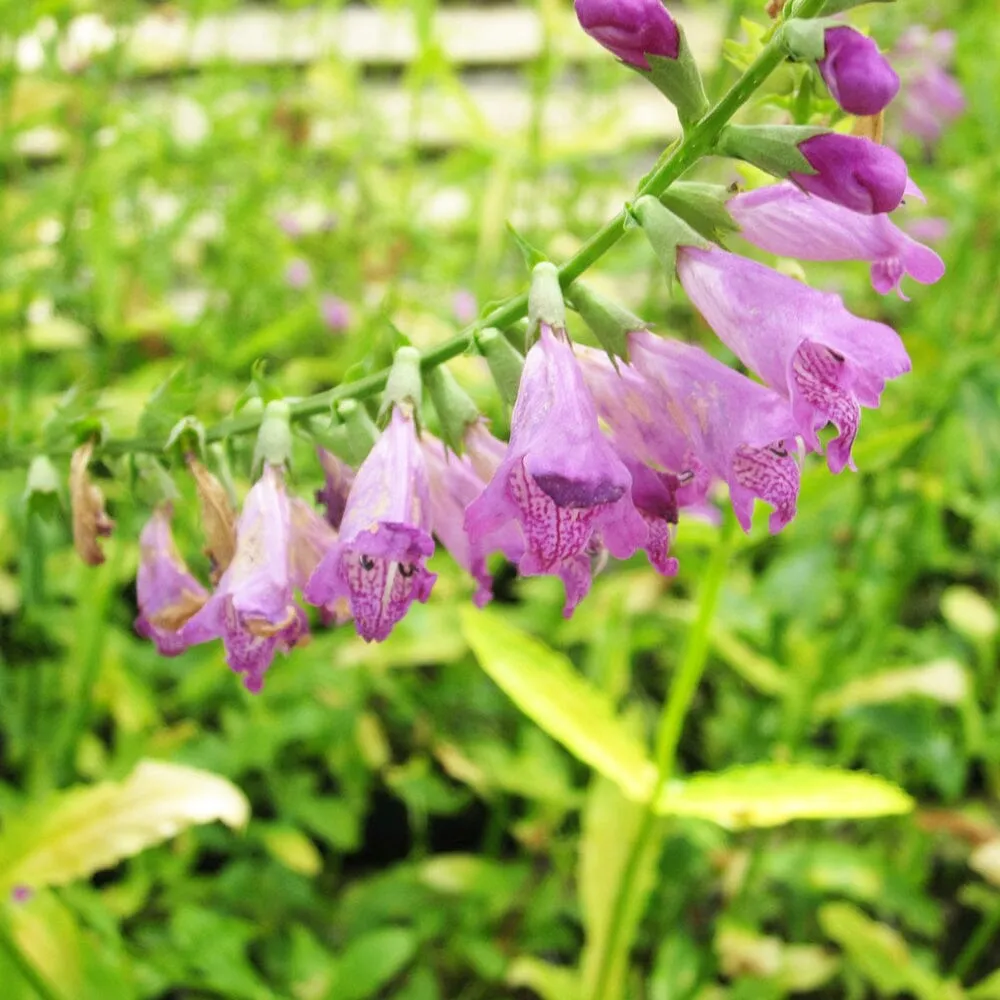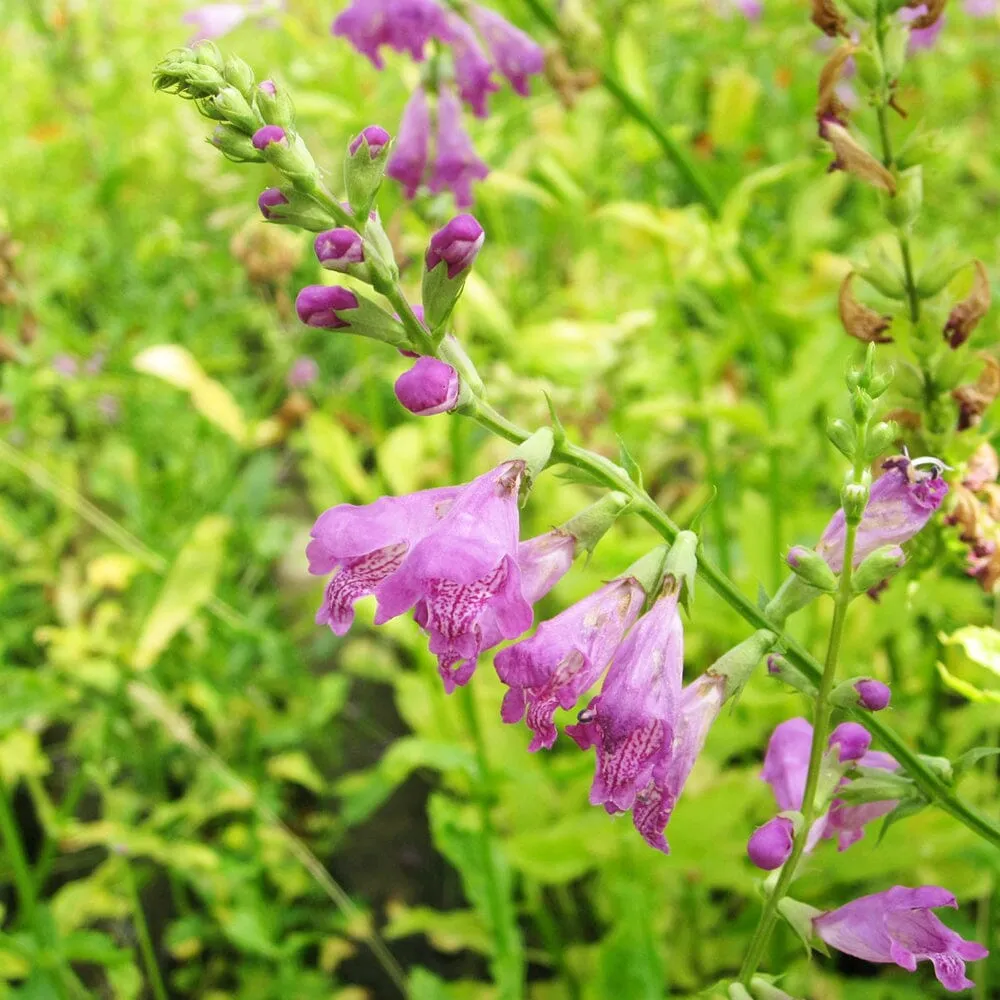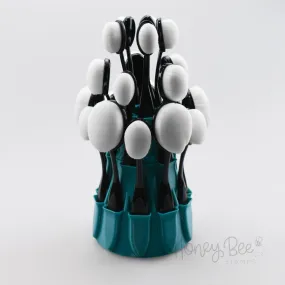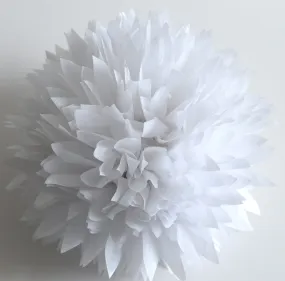Physostegia virginiana, commonly known as Obedient Plant or False Dragonhead, is a herbaceous perennial native to North America. It is named for its unique characteristic of flowers that stay in place when moved, hence the name "Obedient Plant." Here's a detailed description and care guide for Physostegia virginiana:
Description:
Physostegia virginiana is a clump-forming perennial that typically grows to a height of 2 to 4 feet (60 to 120 cm) and spreads about 1 to 3 feet (30 to 90 cm) wide. It features erect, square stems that are lined with lance-shaped, toothed leaves. The leaves are typically dark green but may have a reddish tint. In mid to late summer, it produces showy spikes of tubular flowers that range in color from pink to lavender. The flowers are arranged in dense, terminal spikes and resemble snapdragons. Each individual flower has a two-lipped corolla with a lower lip that serves as a landing pad for pollinators.
Care Guide:
Lighting: Physostegia virginiana thrives in full sun to partial shade. It prefers a location with at least 4-6 hours of direct sunlight per day for optimal flowering. However, it can tolerate some shade, particularly in hotter regions where partial shade can help protect the plant from intense sunlight.
Soil: Obedient Plant grows best in well-draining soil that is rich in organic matter. It can adapt to a variety of soil types, including loam, clay, or sandy soil. However, it prefers soil that retains moisture without becoming waterlogged. Regularly amend the soil with compost to improve its fertility and drainage.
Watering: Physostegia virginiana prefers consistently moist soil. Water the plant regularly, especially during dry periods, to keep the soil evenly moist. Avoid overwatering, as excessive moisture can lead to root rot. Applying a layer of organic mulch around the base of the plant can help conserve soil moisture and suppress weed growth.
Temperature: Obedient Plant is hardy in USDA hardiness zones 3-9. It can tolerate a wide range of temperatures, from cold winters to hot summers. It is generally a low-maintenance plant in terms of temperature requirements.
Maintenance: Physostegia virginiana is a relatively low-maintenance plant. Deadhead the flowers after blooming to encourage additional blooms and prevent self-seeding. Cut back the stems to the ground in late fall or early spring to promote fresh growth. The plant may benefit from staking if it becomes top-heavy or prone to flopping. Dividing the clumps every few years can help rejuvenate the plant and control its spread.
Pests and Diseases: Obedient Plant is generally resistant to pests and diseases. However, it may occasionally attract aphids or spider mites. Monitor the plant for any signs of pest infestation and take appropriate measures if necessary. Good air circulation and avoiding overhead watering can help prevent leaf diseases.
Wildlife Attraction: Physostegia virginiana is attractive to pollinators, including bees and butterflies, which visit the flowers for nectar. It also provides habitat and food for beneficial insects. The plant's tubular flowers make it a good choice for a pollinator garden.
By following these care guidelines, you can successfully grow Physostegia virginiana in suitable garden or landscape settings. Adjust the care routine based on your specific growing conditions and monitor the plant for any signs of stress or unwanted spreading. With its beautiful flowers and ability to attract pollinators, Obedient Plant adds a charming touch to any garden.
















